Spreads in Tarot are patterns of cards.
There are 78 cards in Tarot, but we use only a few for a reading.
So, we either use:
- one card
- two cards
- three cards
- up to any number of cards like 14, 21 cards
You arrange the chosen cards in a specific way to answer a query.
Spreads in Tarot
We select a few from the 78 tarot cards and arrange them in a specific pattern to respond to a query.
These are called spreads.
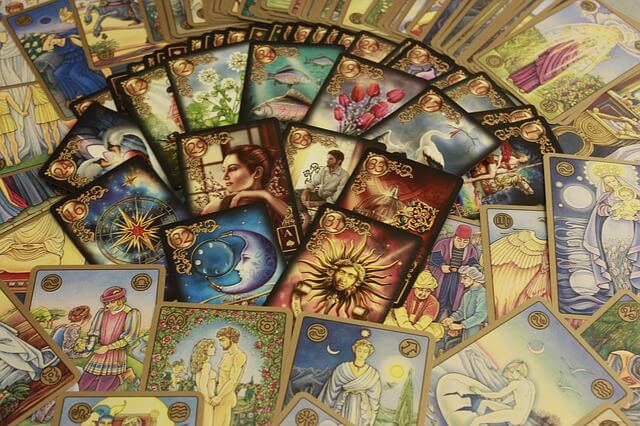
There is a huge variety of spreads.
You can research various spreads and create your own.
Each spread is used for a certain specific query.
We have a past, present, and future spread.
We have a relationship spread.
And a horoscope spread.
In a three-card spread, the first card represents the past.
The second card discusses the present, and the third discusses the future.
Using spreads allows for more specific answers.
Spreads help you delve into details for precise answers.
So, let’s get started
Single Card Spreads
Our first spread is a single-card spread.
Single card spreads can also answer yes or no questions in tarot.
Some cards are inherently positive and indicate ‘yes’.
Conversely, other cards indicate ‘no’.
For a quick reading, choose one card and interpret it in relation to your query.
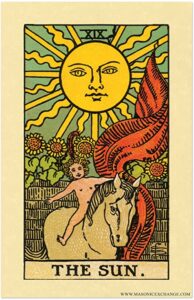
The single-card spread is popular among tarot beginners.
Beginners often use this spread by drawing one card from the deck.
Then, they interpret how the card relates to the person and their query, seeking the message from the universe.
What is the answer that the universe is trying to give to you for that query?
Single-card spreads are simple yet challenging.
This is because you need a thorough understanding of each card’s meaning.
Developing the skill to connect the card with the query is essential.
The single card spread is the basic and simplest spread of tarot.
Two Card Spreads
Now, we have a two-card spread.
In this spread, either we pick two cards, or the person chooses them from the tarot deck.
Each of the two cards has its own unique set of meanings.
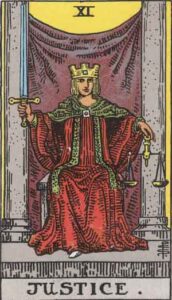
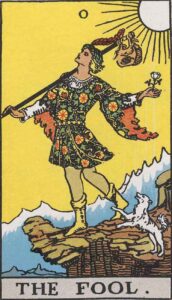
The first card reveals the situation a person is facing, while the second card explains why.
Imagine someone asking you, ‘Will I get that job?’
For instance, the first card answers if they will get the job, and the second explains why.
Thus, the second card provides depth by explaining the reasons.
This approach delves deeper, offering new insights into the query.
It explores both outcomes: why something might or might not happen.
Three Card Spreads
Now, the next spread is the three-card spread.
Three-card spreads are one of the most common spreads, after single-card spreads.

Three-card spreads are one of the most common spreads, after single-card spreads.
In a three-card spread, you select or ask the person to pick three cards from the deck.
Generally, the first card represents the past, the second, present, and third future.
Other interpretations exist.
For instance, when asking about mind, body, and soul, the first card represents the mind, the second the body, and the third the soul.
For queries about life purpose, the first card reflects the person’s personality.
The second card advises on actions and steps to be taken.
The third card reveals the outcome of their destiny.
More Interpretations of Three Card Spreads
Another interpretation is that the first card represents a person’s situation, detailing their circumstances.
The second card suggests necessary actions.
The third card predicts the outcome of these actions.
This is a popular spread.
Mastering any spread requires repeated practice.
You must learn to link the spread and each card to the person’s situation.
The Five Card Spread

Now, we have the five-card spread.
It is a bit complex.
The spread gets more complex with more cards, as each must be interpreted in a specific way.
The first card here represents the past.
You need to understand each card’s meaning concerning the past, present, and future.
This five-card spread is also used for yes and no tarot.
With a single card spread, you will have one card, which can be either positive or negative.
But here, you have five cards.
Each of these five cards may have a positive or negative interpretation.
And you must interpret these cards together to provide a reading.
So, the first card and the second card represent the past.
The first represents the things which happened deep into the past.
The second card represents the recent past.
The third represents the present.
The fourth presents the near future.
And the fifth represents the far future, a very long-range reading.
Two and four are short-term readings, and one and five are long-term readings.
Once proficient in single, double, and triple spreads, the five-card spread allows for deeper query analysis.
The Nine Card Spread
Now, we have this nine-card spread.
The nine-card spread appears complex but is quite straightforward.
This spread delves deep into a person’s consciousness, thoughts, feelings, and emotions.
So, the first three cards of the upper row represent aspirations.
What are a person’s aspirations, dreams, and goals?
The second row symbolizes consciousness, revealing their thoughts, feelings, and plans.
The third row signifies the subconscious, the hidden and unrevealed aspects of the mind.

So, this represents the hidden side of things.
The columns are past, present, and future.
So, it is a very good form of tarot reading because, in this reading, you can confirm the reading by giving predictions about the person’s past.
If you employ the nine-card spread, you can tell, ‘Okay, in the past, you were thinking like this. You had these aspirations, and deep into your mind, you felt like this.’
So that person now can relate to it and say, ‘Yes, I felt like that.’ Or ‘No, I didn’t feel like that.’
You can also confirm their present circumstances and understand their current situations.
These are your thoughts or aspirations, and what do you want to achieve in the future?
What are your aspirations?
Your goals?
What are your plans?
Thus, the nine-card spread is highly effective and recommended for detailed readings.
Relationship Spreads

Now we have relationship spreads.
In the relationship spread, 10 cards are used, each with its distinct meaning.
So, the first card reveals the relationship’s history, while the second card explores your feelings about its past.
The third card reflects your partner’s experience and your feelings about the past of the relationship.
The fourth card represents your current experiences in the relationship.
The fifth card represents your partner’s current experience in the relationship.
The sixth card represents the current, complete picture of your relationship.
Cards seven and eight reflect your and your partner’s expectations for the relationship.
The ninth card indicates where the relationship is headed, showing whether it is improving or deteriorating.
The 10th card synthesizes the previous nine cards to predict the relationship’s overall outcome, revealing whether it will be fruitful.
The Celtic Cross
Next, we have the Celtic cross.
This is another ancient spread which is used in tarot astrology.
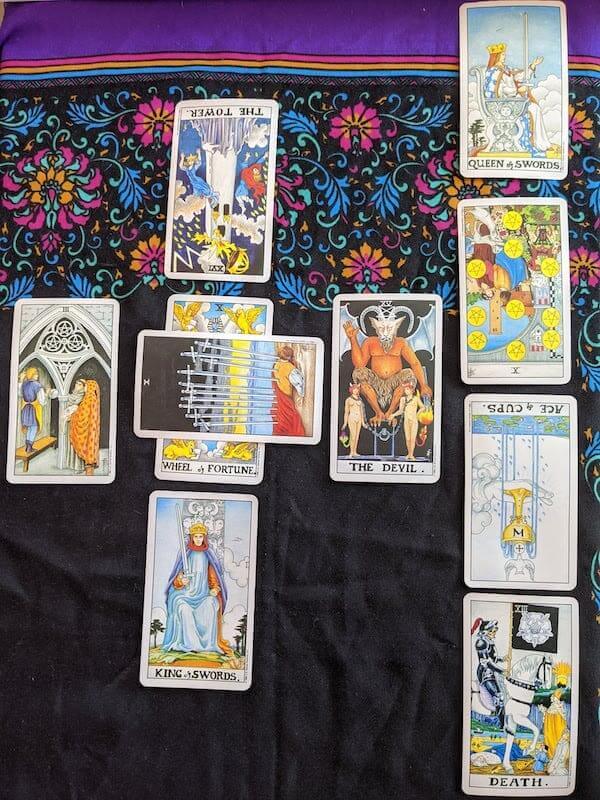
The first card signifies your personality and general atmosphere in the Celtic Cross.
The second card, which crosses the first, represents your support network and the quality of their support.
The third card represents your past, including your previous focus and priorities.
The fourth card provides a broader view of your past.
The fifth card identifies your strengths, be they emotional, intellectual, or financial.
The sixth represents your near future.
The seventh card offers a general suggestion or advice from the universe for achieving success.
You can learn areas for improvement and lessons from the eighth card.
The ninth card uncovers your deepest hopes and fears, such as your fear of failure.
The tenth card predicts the potential outcome of your current activities and choices.
The Zodiac Spread
Now, we have the zodiac spread.

It is a very complex and advanced stage tarot spread.
This spread uses 12 cards, each representing an astrological sign.
Each card symbolizes a zodiac sign.
We assess compatibility between signs and interpret the overall result.
So, it is one of the most complex and advanced tarot spreads.
The Mandela Spread
Finally, today, we will introduce the mandala spread.
This is also a zodiac-based spread.
Additionally, it symbolizes directions, with the upper part indicating north, south, east, and west.
So, it represents your life altogether.
For instance, we divide the lifespan into 12 phases, assessing circumstances during childhood.
These were the situations you faced in your youth.
You faced these circumstances in your adulthood.
And in your mid-age, these were the circumstances.
This approach illustrates how the mandala spread is utilized for life-stage analysis.
Spreads In Tarot: A Summary
So, as you can see, there are numerous spreads in tarot, from basic to more advanced.
We hope you enjoyed learning about them, and if so, please share this post with anyone you feel would find it of value.
Hana is a numerology, tarot and astrology expert who studied extensively in India and made some amazing connections in that time. Her goal is to teach people how to live lives of passion and purpose by utilizing numbers, tarot and the planets as a guide.

